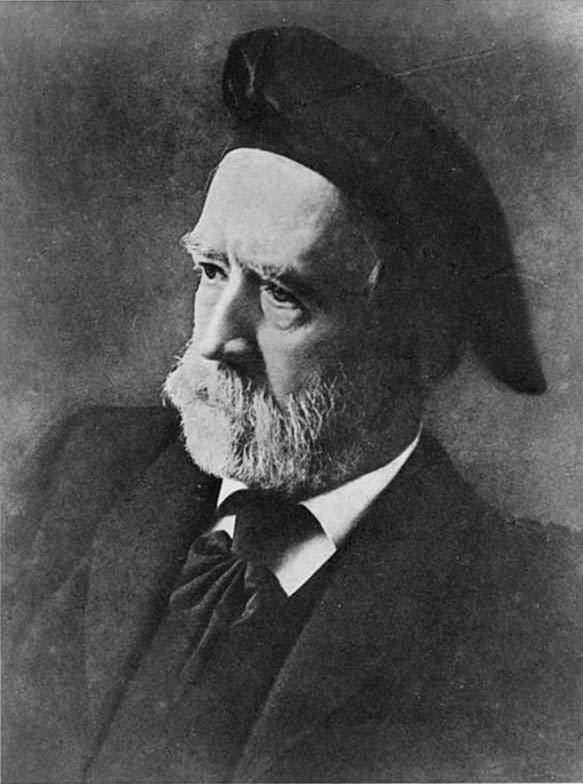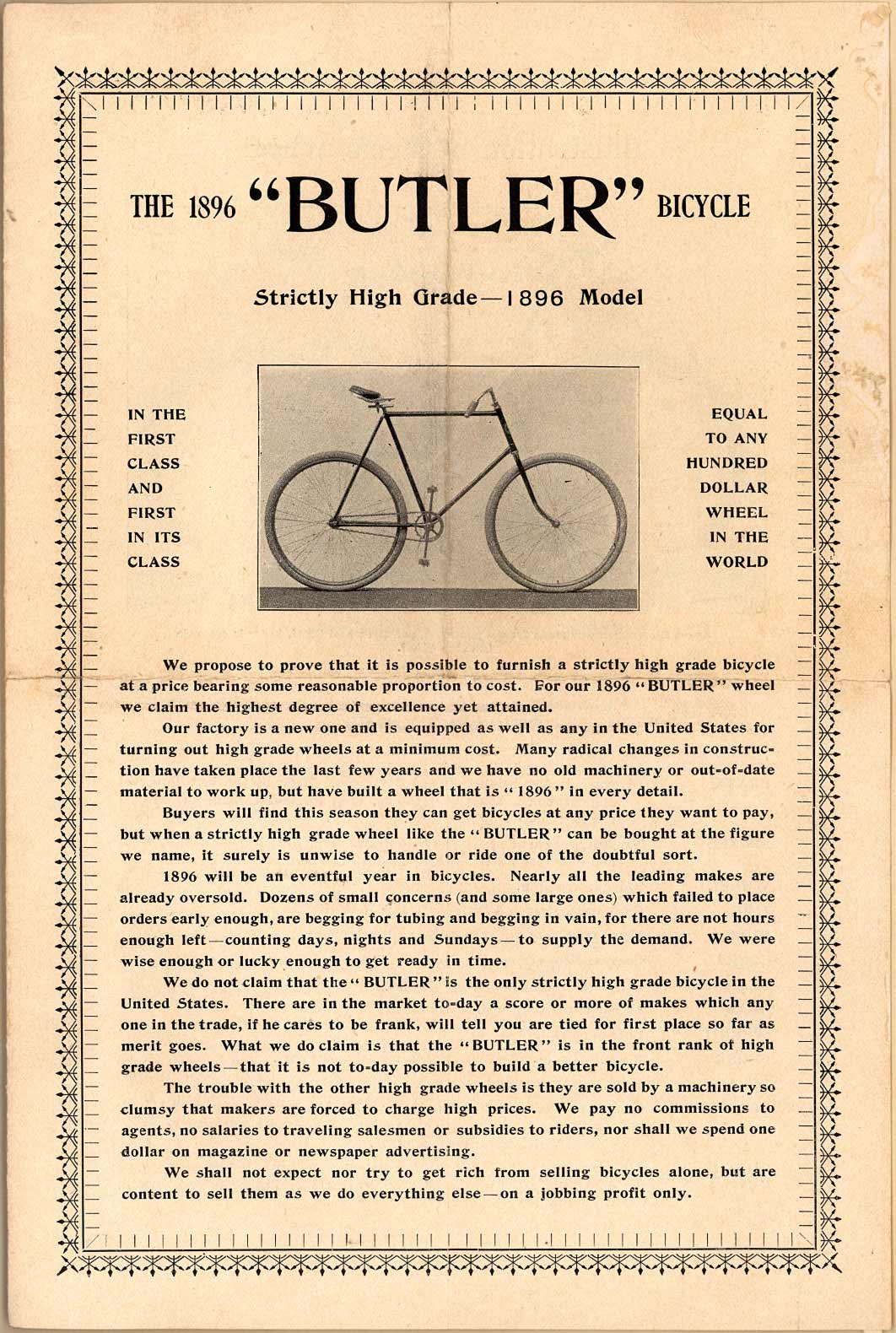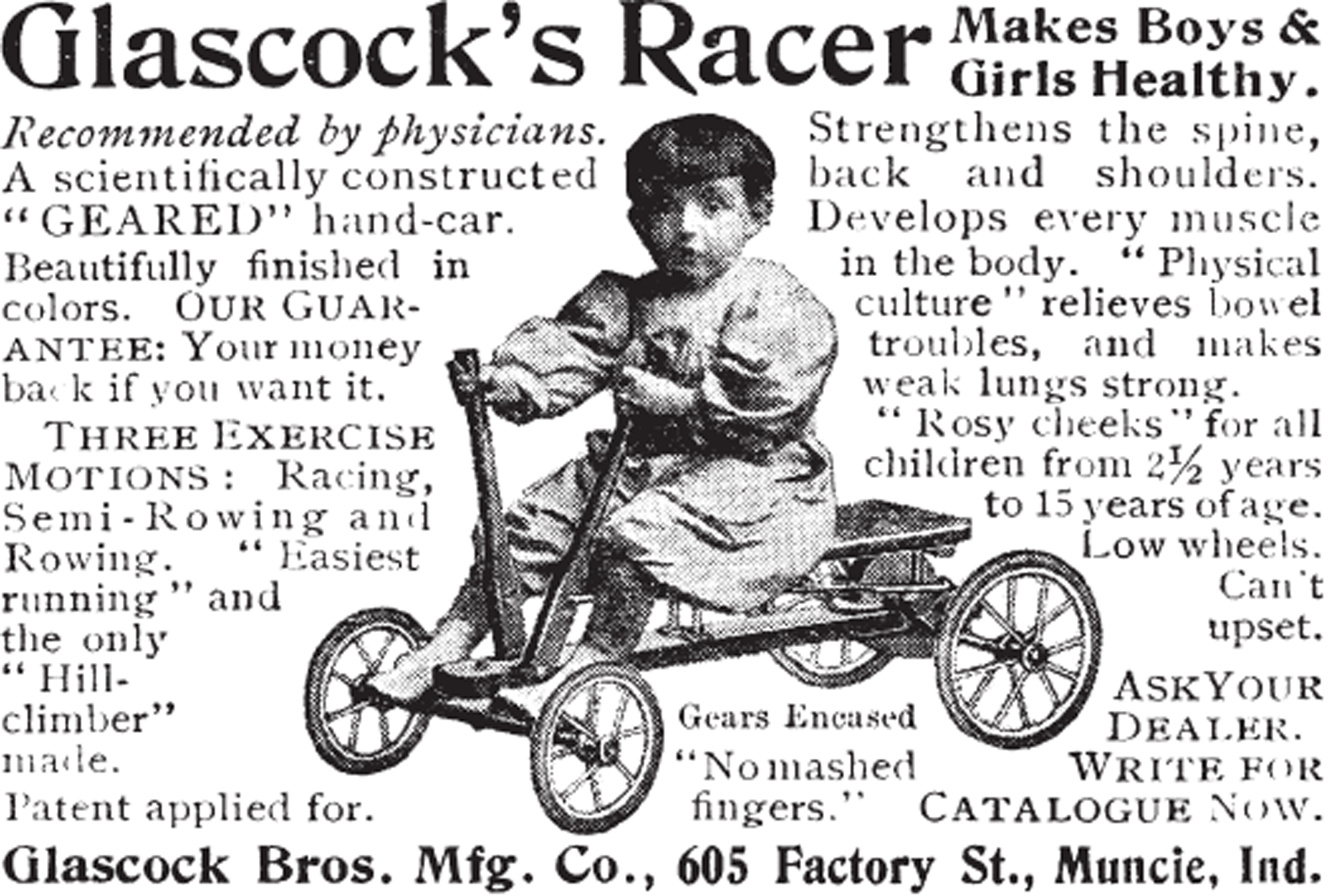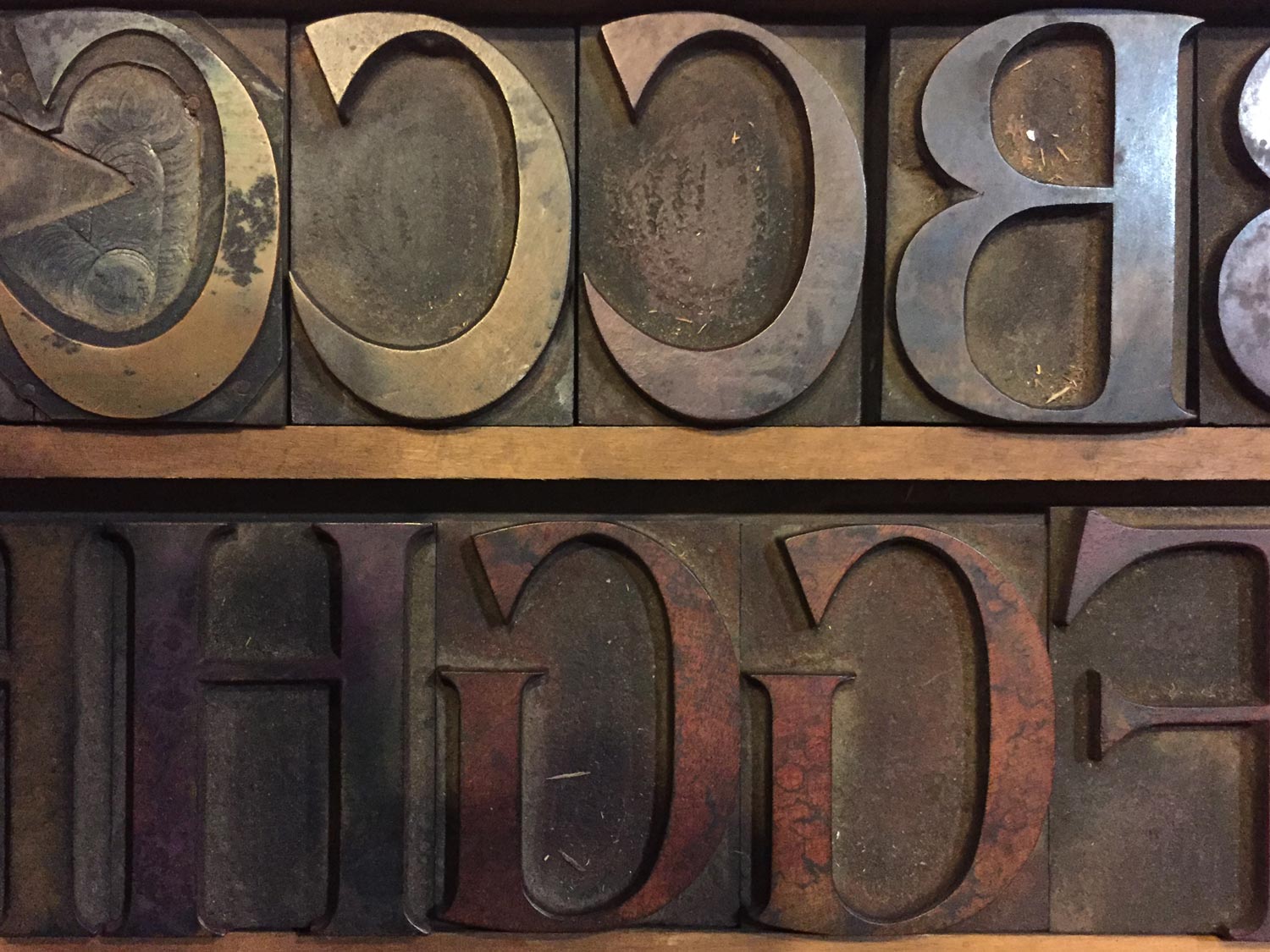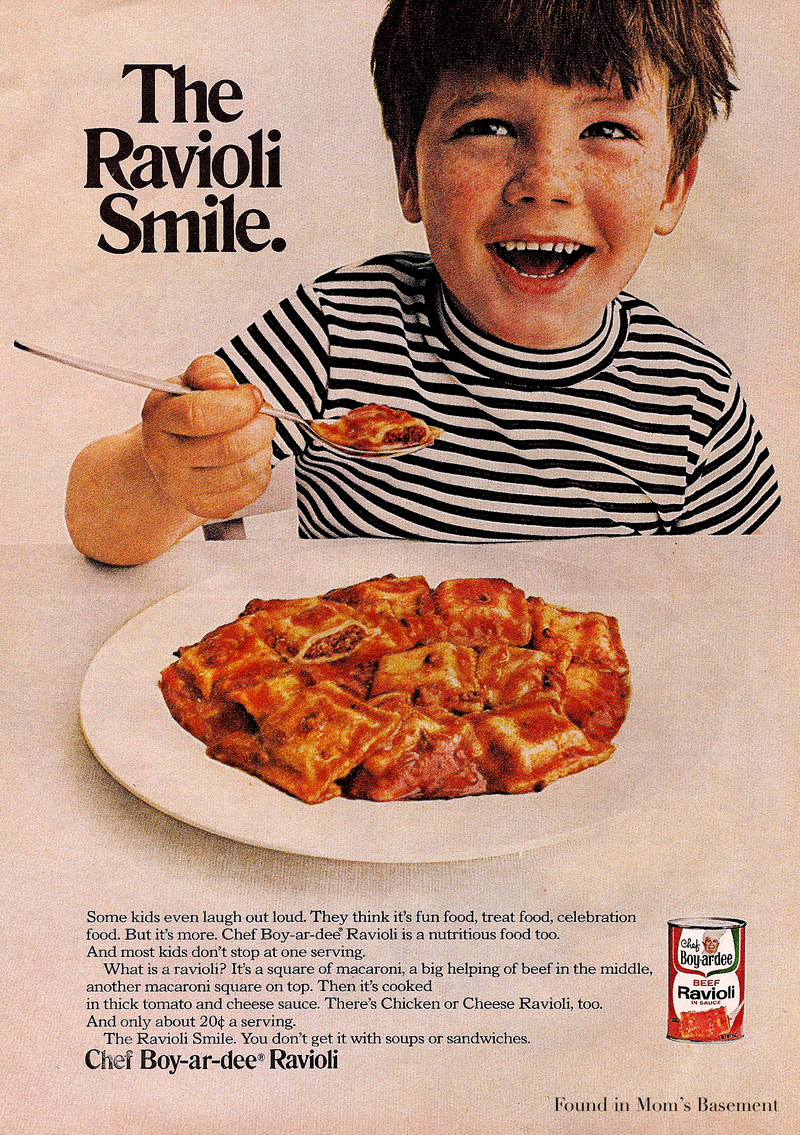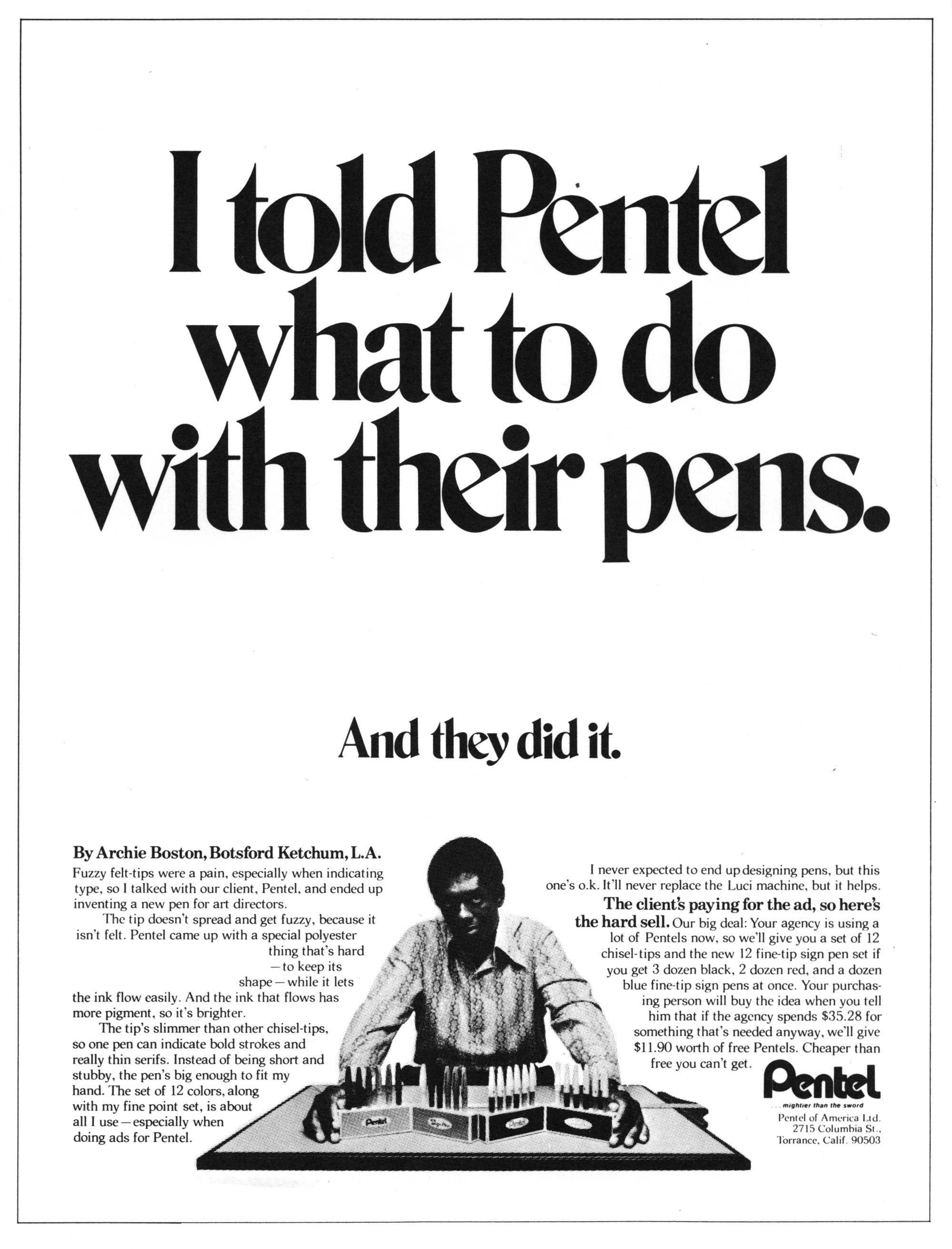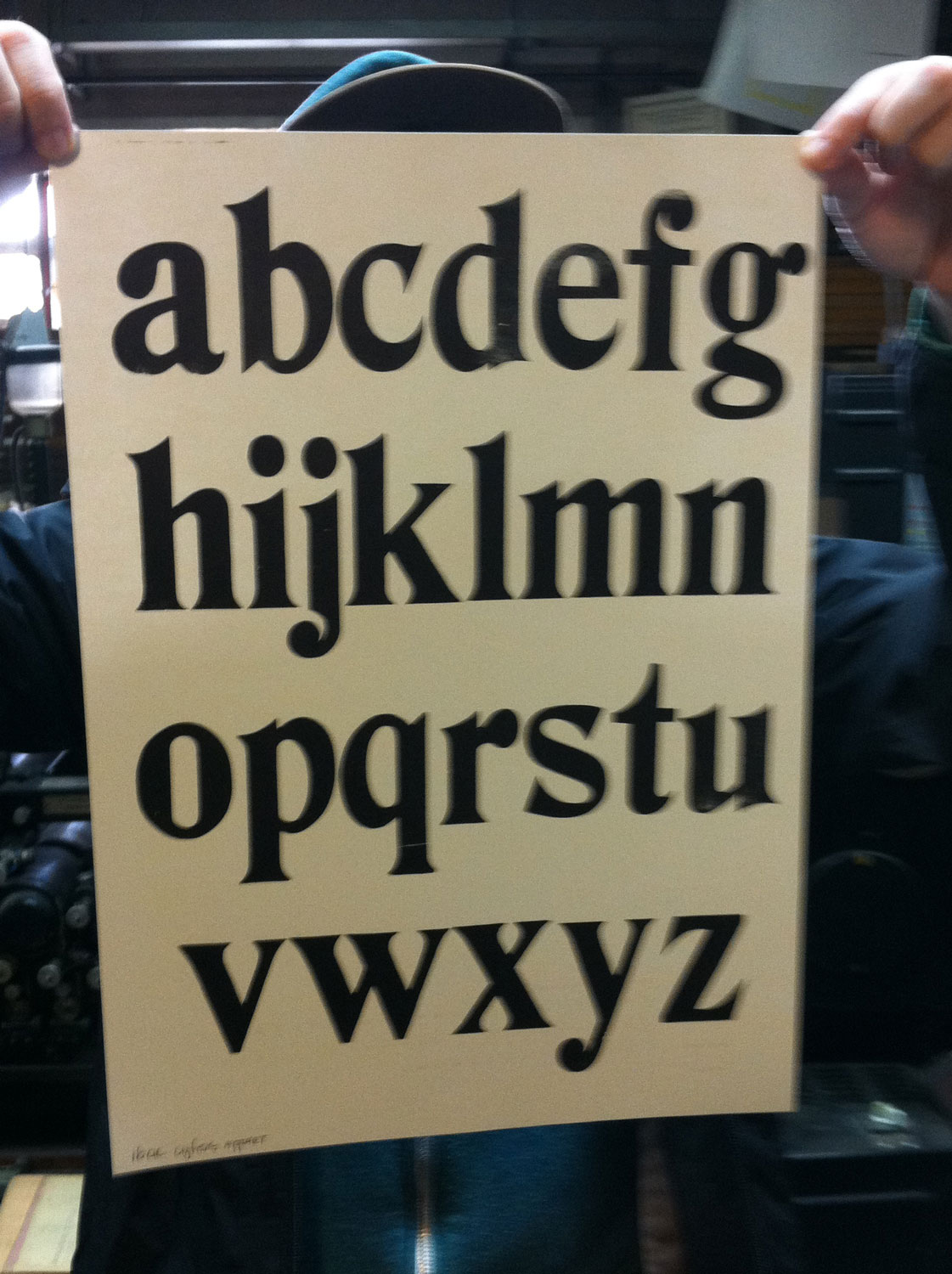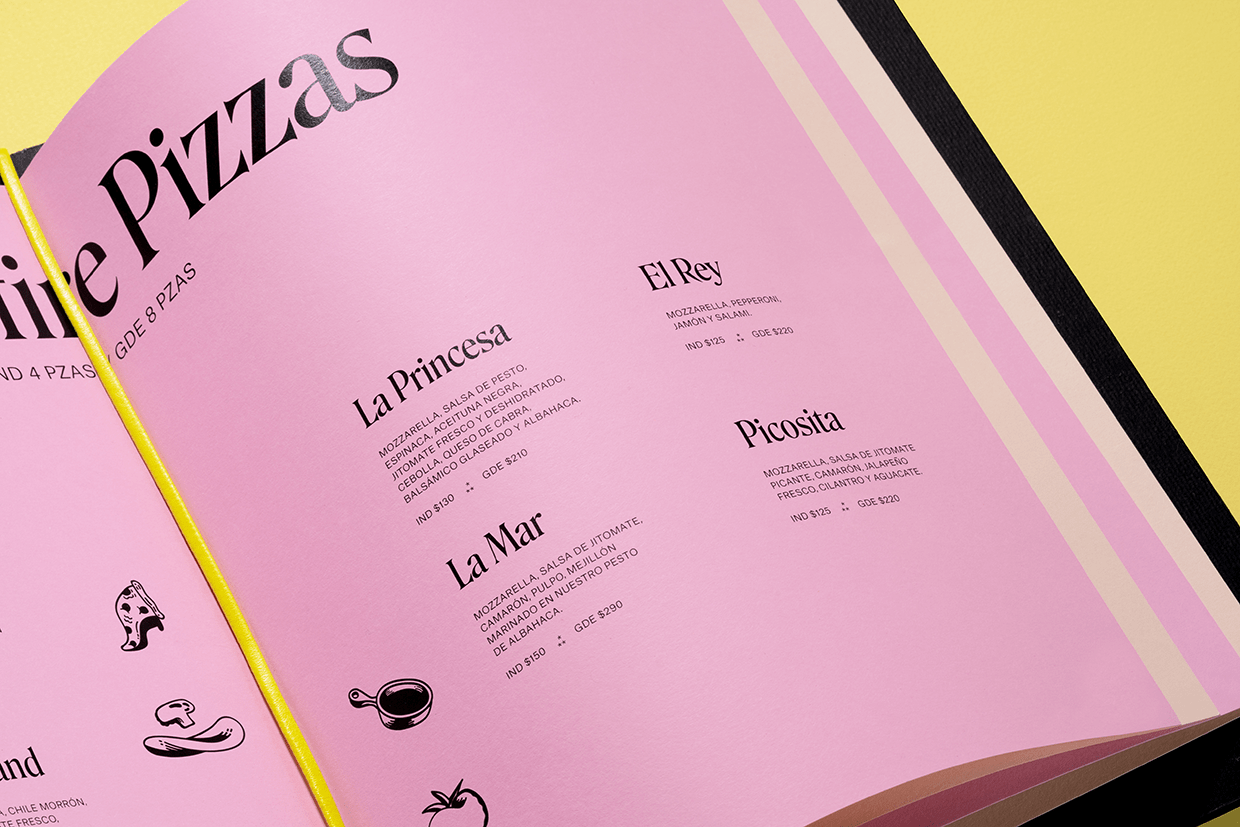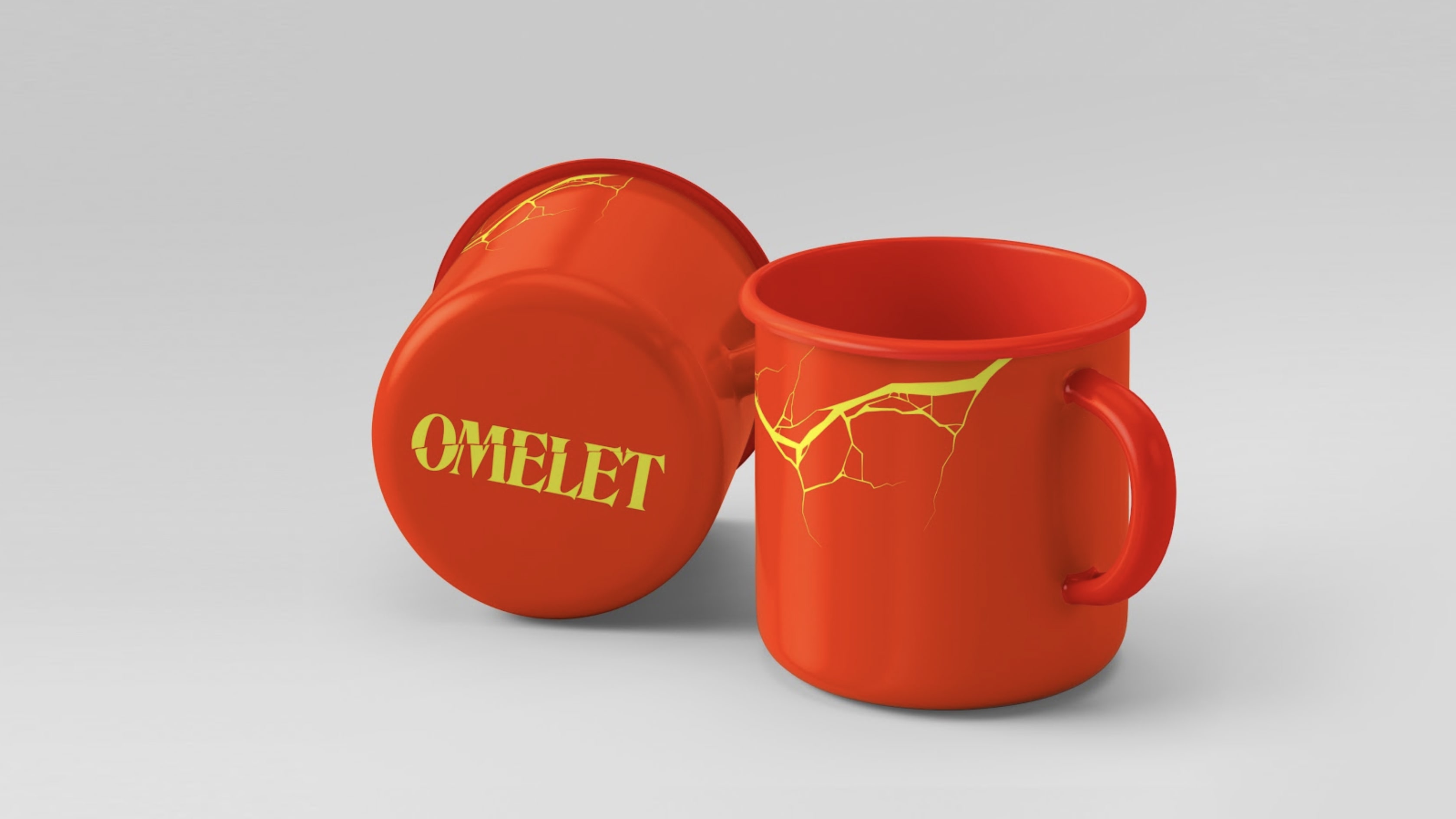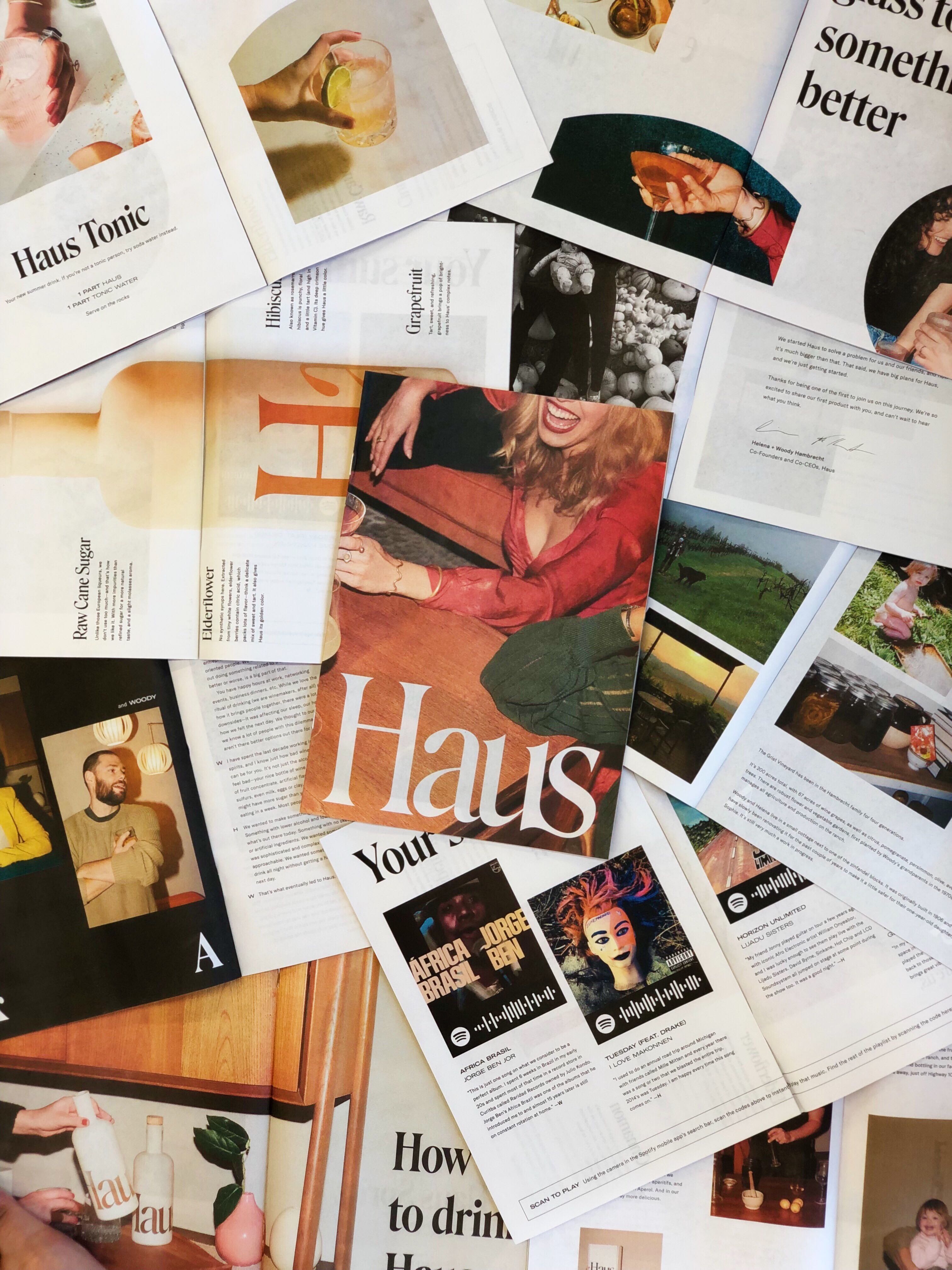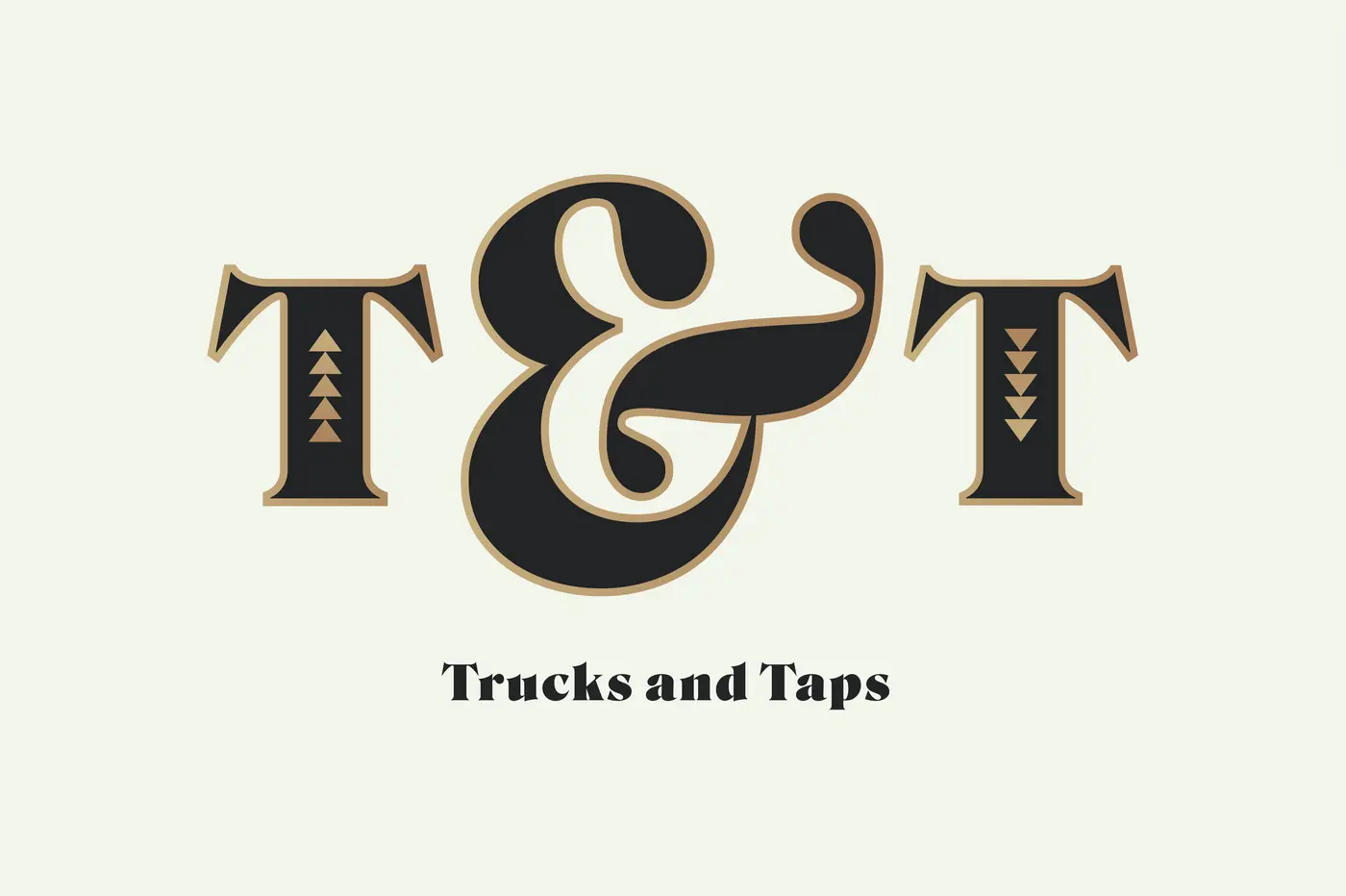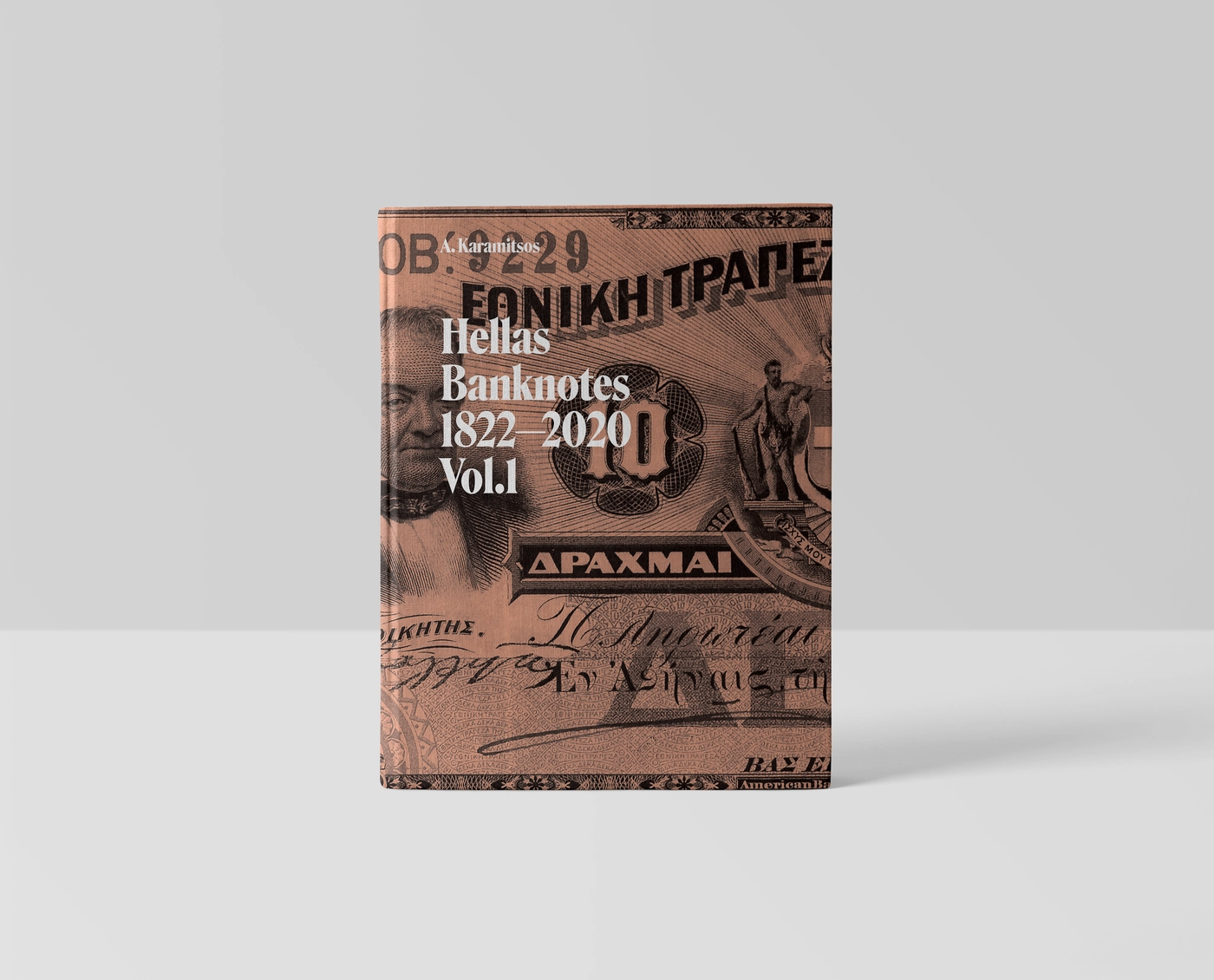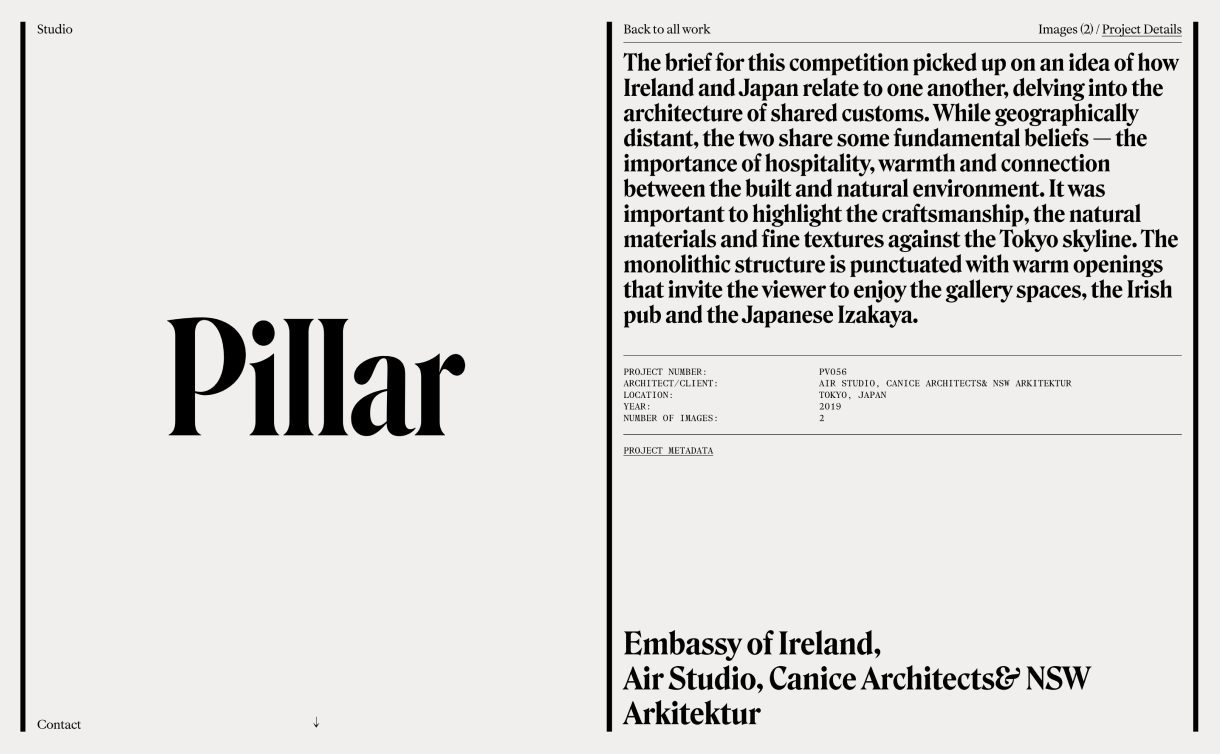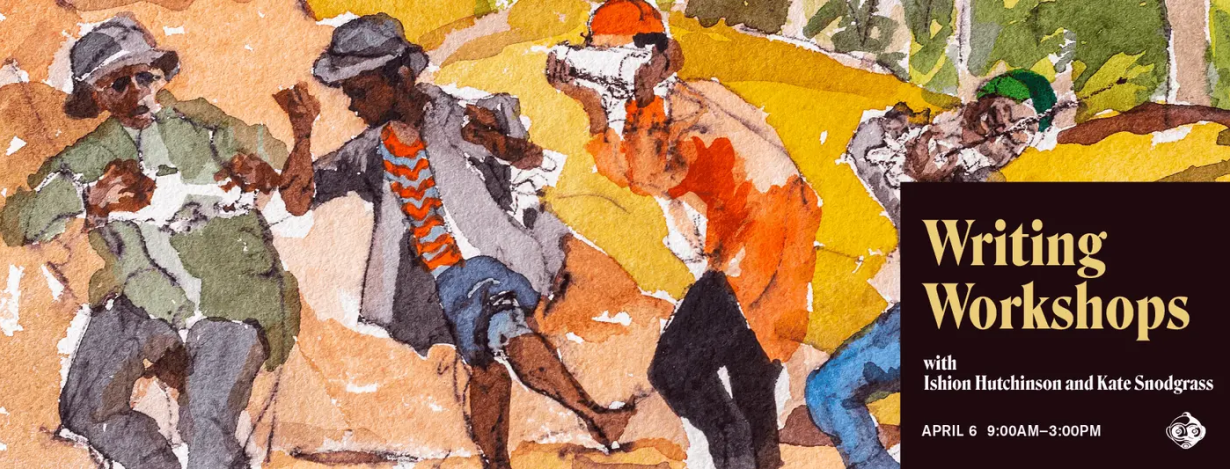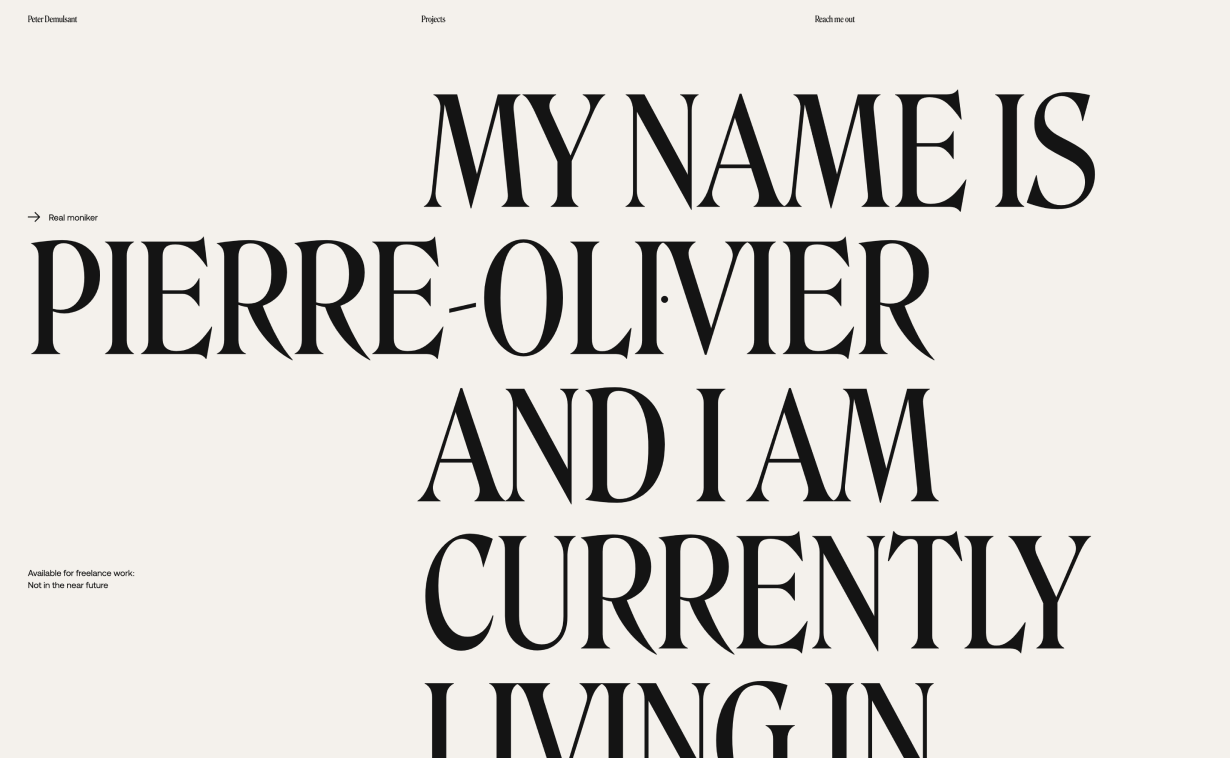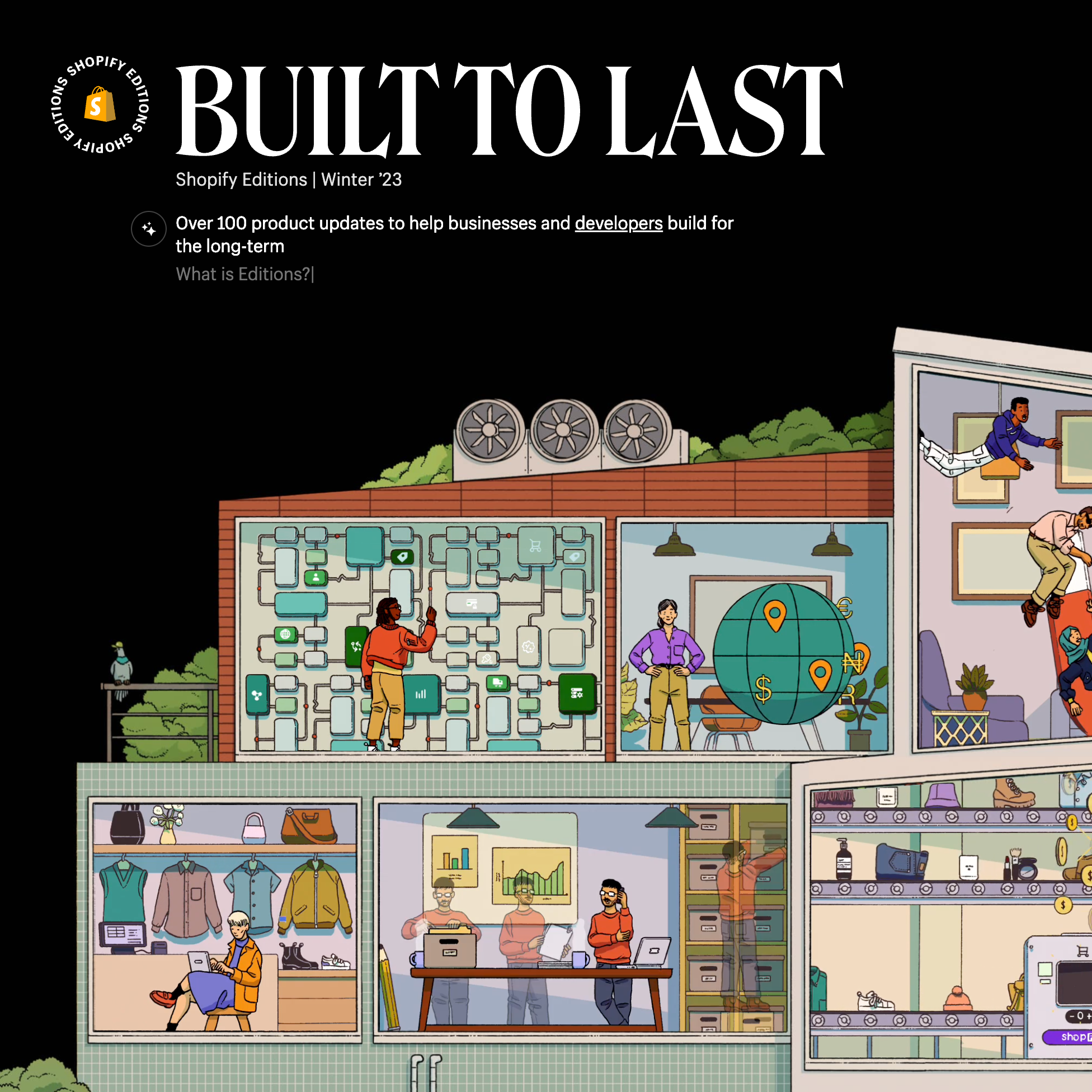Theodore Low De Vinne was an American printer and scholarly author on typography.
De Vinne did much for the improvement of American printing.
De Vinne was born at Stamford, Connecticut, and educated in the common schools of the various towns where his father had pastorates.
He developed the ability to be a printer while employed in a shop at Fishkill, New York.
He worked at the Newburgh, New York Gazette, then moved to New York City.
In 1849 he entered the establishment of Francis Hart, and worked there until 1883 when the business was renamed Theodore L. De Vinne & Co.
In 1886, he moved to a model plant designed by him on Lafayette Place, which still stands.
De Vinne either commissioned Linn Boyd Benton, or co-designed in conjunction with Benton, the hugely popular Century Roman typeface for use by The Century Magazine, which his firm printed.
For use at his own press, he also commissioned Linotype to produce De Vinne, an updated Elzevir (or French Oldstyle) type, and the Bruce Typefoundry to produce Renner, a Venetian face.
He was one of nine men who founded the Grolier Club, and he was printer to the Club for the first two decades of its existence and designed and printed most of its publications during his lifetime.
He was also a founder and the first president of the United Typothetae of America, a predecessor of the Printing Industries of America.
Theodore Low De Vinne was an American printer and scholarly author on typography.
De Vinne did much for the improvement of American printing.
De Vinne was born at Stamford, Connecticut, and educated in the common schools of the various towns where his father had pastorates.
He developed the ability to be a printer while employed in a shop at Fishkill, New York.
He worked at the Newburgh, New York Gazette, then moved to New York City.
In 1849 he entered the establishment of Francis Hart, and worked there until 1883 when the business was renamed Theodore L. De Vinne & Co.
In 1886, he moved to a model plant designed by him on Lafayette Place, which still stands.
De Vinne either commissioned Linn Boyd Benton, or co-designed in conjunction with Benton, the hugely popular Century Roman typeface for use by The Century Magazine, which his firm printed.
For use at his own press, he also commissioned Linotype to produce De Vinne, an updated Elzevir (or French Oldstyle) type, and the Bruce Typefoundry to produce Renner, a Venetian face.
He was one of nine men who founded the Grolier Club, and he was printer to the Club for the first two decades of its existence and designed and printed most of its publications during his lifetime.
He was also a founder and the first president of the United Typothetae of America, a predecessor of the Printing Industries of America.
Theodore Low De Vinne was an American printer and scholarly author on typography.
De Vinne did much for the improvement of American printing.
De Vinne was born at Stamford, Connecticut, and educated in the common schools of the various towns where his father had pastorates.
He developed the ability to be a printer while employed in a shop at Fishkill, New York.
He worked at the Newburgh, New York Gazette, then moved to New York City.
In 1849 he entered the establishment of Francis Hart, and worked there until 1883 when the business was renamed Theodore L. De Vinne & Co.
In 1886, he moved to a model plant designed by him on Lafayette Place, which still stands.
De Vinne either commissioned Linn Boyd Benton, or co-designed in conjunction with Benton, the hugely popular Century Roman typeface for use by The Century Magazine, which his firm printed.
For use at his own press, he also commissioned Linotype to produce De Vinne, an updated Elzevir (or French Oldstyle) type, and the Bruce Typefoundry to produce Renner, a Venetian face.
He was one of nine men who founded the Grolier Club, and he was printer to the Club for the first two decades of its existence and designed and printed most of its publications during his lifetime.
He was also a founder and the first president of the United Typothetae of America, a predecessor of the Printing Industries of America.
Theodore Low De Vinne was an American printer and scholarly author on typography.
De Vinne did much for the improvement of American printing.
De Vinne was born at Stamford, Connecticut, and educated in the common schools of the various towns where his father had pastorates.
He developed the ability to be a printer while employed in a shop at Fishkill, New York.
He worked at the Newburgh, New York Gazette, then moved to New York City.
In 1849 he entered the establishment of Francis Hart, and worked there until 1883 when the business was renamed Theodore L. De Vinne & Co.
In 1886, he moved to a model plant designed by him on Lafayette Place, which still stands.
De Vinne either commissioned Linn Boyd Benton, or co-designed in conjunction with Benton, the hugely popular Century Roman typeface for use by The Century Magazine, which his firm printed.
For use at his own press, he also commissioned Linotype to produce De Vinne, an updated Elzevir (or French Oldstyle) type, and the Bruce Typefoundry to produce Renner, a Venetian face.
He was one of nine men who founded the Grolier Club, and he was printer to the Club for the first two decades of its existence and designed and printed most of its publications during his lifetime.
He was also a founder and the first president of the United Typothetae of America, a predecessor of the Printing Industries of America.
Theodore Low De Vinne was an American printer and scholarly author on typography.
De Vinne did much for the improvement of American printing.
De Vinne was born at Stamford, Connecticut, and educated in the common schools of the various towns where his father had pastorates.
He developed the ability to be a printer while employed in a shop at Fishkill, New York.
He worked at the Newburgh, New York Gazette, then moved to New York City.
In 1849 he entered the establishment of Francis Hart, and worked there until 1883 when the business was renamed Theodore L. De Vinne & Co.
In 1886, he moved to a model plant designed by him on Lafayette Place, which still stands.
De Vinne either commissioned Linn Boyd Benton, or co-designed in conjunction with Benton, the hugely popular Century Roman typeface for use by The Century Magazine, which his firm printed.
For use at his own press, he also commissioned Linotype to produce De Vinne, an updated Elzevir (or French Oldstyle) type, and the Bruce Typefoundry to produce Renner, a Venetian face.
He was one of nine men who founded the Grolier Club, and he was printer to the Club for the first two decades of its existence and designed and printed most of its publications during his lifetime.
He was also a founder and the first president of the United Typothetae of America, a predecessor of the Printing Industries of America.
Theodore Low De Vinne was an American printer and scholarly author on typography.
De Vinne did much for the improvement of American printing.
De Vinne was born at Stamford, Connecticut, and educated in the common schools of the various towns where his father had pastorates.
He developed the ability to be a printer while employed in a shop at Fishkill, New York.
He worked at the Newburgh, New York Gazette, then moved to New York City.
In 1849 he entered the establishment of Francis Hart, and worked there until 1883 when the business was renamed Theodore L. De Vinne & Co.
In 1886, he moved to a model plant designed by him on Lafayette Place, which still stands.
De Vinne either commissioned Linn Boyd Benton, or co-designed in conjunction with Benton, the hugely popular Century Roman typeface for use by The Century Magazine, which his firm printed.
For use at his own press, he also commissioned Linotype to produce De Vinne, an updated Elzevir (or French Oldstyle) type, and the Bruce Typefoundry to produce Renner, a Venetian face.
He was one of nine men who founded the Grolier Club, and he was printer to the Club for the first two decades of its existence and designed and printed most of its publications during his lifetime.
He was also a founder and the first president of the United Typothetae of America, a predecessor of the Printing Industries of America.
Theodore Low De Vinne was an American printer and scholarly author on typography.
De Vinne did much for the improvement of American printing.
De Vinne was born at Stamford, Connecticut, and educated in the common schools of the various towns where his father had pastorates.
He developed the ability to be a printer while employed in a shop at Fishkill, New York.
He worked at the Newburgh, New York Gazette, then moved to New York City.
In 1849 he entered the establishment of Francis Hart, and worked there until 1883 when the business was renamed Theodore L. De Vinne & Co.
In 1886, he moved to a model plant designed by him on Lafayette Place, which still stands.
De Vinne either commissioned Linn Boyd Benton, or co-designed in conjunction with Benton, the hugely popular Century Roman typeface for use by The Century Magazine, which his firm printed.
For use at his own press, he also commissioned Linotype to produce De Vinne, an updated Elzevir (or French Oldstyle) type, and the Bruce Typefoundry to produce Renner, a Venetian face.
He was one of nine men who founded the Grolier Club, and he was printer to the Club for the first two decades of its existence and designed and printed most of its publications during his lifetime.
He was also a founder and the first president of the United Typothetae of America, a predecessor of the Printing Industries of America.
Theodore Low De Vinne was an American printer and scholarly author on typography.
De Vinne did much for the improvement of American printing.
De Vinne was born at Stamford, Connecticut, and educated in the common schools of the various towns where his father had pastorates.
He developed the ability to be a printer while employed in a shop at Fishkill, New York.
He worked at the Newburgh, New York Gazette, then moved to New York City.
In 1849 he entered the establishment of Francis Hart, and worked there until 1883 when the business was renamed Theodore L. De Vinne & Co.
In 1886, he moved to a model plant designed by him on Lafayette Place, which still stands.
De Vinne either commissioned Linn Boyd Benton, or co-designed in conjunction with Benton, the hugely popular Century Roman typeface for use by The Century Magazine, which his firm printed.
For use at his own press, he also commissioned Linotype to produce De Vinne, an updated Elzevir (or French Oldstyle) type, and the Bruce Typefoundry to produce Renner, a Venetian face.
He was one of nine men who founded the Grolier Club, and he was printer to the Club for the first two decades of its existence and designed and printed most of its publications during his lifetime.
He was also a founder and the first president of the United Typothetae of America, a predecessor of the Printing Industries of America.
Theodore Low De Vinne was an American printer and scholarly author on typography.
De Vinne did much for the improvement of American printing.
De Vinne was born at Stamford, Connecticut, and educated in the common schools of the various towns where his father had pastorates.
He developed the ability to be a printer while employed in a shop at Fishkill, New York.
He worked at the Newburgh, New York Gazette, then moved to New York City.
In 1849 he entered the establishment of Francis Hart, and worked there until 1883 when the business was renamed Theodore L. De Vinne & Co.
In 1886, he moved to a model plant designed by him on Lafayette Place, which still stands.
De Vinne either commissioned Linn Boyd Benton, or co-designed in conjunction with Benton, the hugely popular Century Roman typeface for use by The Century Magazine, which his firm printed.
For use at his own press, he also commissioned Linotype to produce De Vinne, an updated Elzevir (or French Oldstyle) type, and the Bruce Typefoundry to produce Renner, a Venetian face.
He was one of nine men who founded the Grolier Club, and he was printer to the Club for the first two decades of its existence and designed and printed most of its publications during his lifetime.
He was also a founder and the first president of the United Typothetae of America, a predecessor of the Printing Industries of America.
Theodore Low De Vinne was an American printer and scholarly author on typography.
De Vinne did much for the improvement of American printing.
De Vinne was born at Stamford, Connecticut, and educated in the common schools of the various towns where his father had pastorates.
He developed the ability to be a printer while employed in a shop at Fishkill, New York.
He worked at the Newburgh, New York Gazette, then moved to New York City.
In 1849 he entered the establishment of Francis Hart, and worked there until 1883 when the business was renamed Theodore L. De Vinne & Co.
In 1886, he moved to a model plant designed by him on Lafayette Place, which still stands.
De Vinne either commissioned Linn Boyd Benton, or co-designed in conjunction with Benton, the hugely popular Century Roman typeface for use by The Century Magazine, which his firm printed.
For use at his own press, he also commissioned Linotype to produce De Vinne, an updated Elzevir (or French Oldstyle) type, and the Bruce Typefoundry to produce Renner, a Venetian face.
He was one of nine men who founded the Grolier Club, and he was printer to the Club for the first two decades of its existence and designed and printed most of its publications during his lifetime.
He was also a founder and the first president of the United Typothetae of America, a predecessor of the Printing Industries of America.
Theodore Low De Vinne was an American printer and scholarly author on typography.
De Vinne did much for the improvement of American printing.
De Vinne was born at Stamford, Connecticut, and educated in the common schools of the various towns where his father had pastorates.
He developed the ability to be a printer while employed in a shop at Fishkill, New York.
He worked at the Newburgh, New York Gazette, then moved to New York City.
In 1849 he entered the establishment of Francis Hart, and worked there until 1883 when the business was renamed Theodore L. De Vinne & Co.
In 1886, he moved to a model plant designed by him on Lafayette Place, which still stands.
De Vinne either commissioned Linn Boyd Benton, or co-designed in conjunction with Benton, the hugely popular Century Roman typeface for use by The Century Magazine, which his firm printed.
For use at his own press, he also commissioned Linotype to produce De Vinne, an updated Elzevir (or French Oldstyle) type, and the Bruce Typefoundry to produce Renner, a Venetian face.
He was one of nine men who founded the Grolier Club, and he was printer to the Club for the first two decades of its existence and designed and printed most of its publications during his lifetime.
He was also a founder and the first president of the United Typothetae of America, a predecessor of the Printing Industries of America.
Theodore Low De Vinne was an American printer and scholarly author on typography.
De Vinne did much for the improvement of American printing.
De Vinne was born at Stamford, Connecticut, and educated in the common schools of the various towns where his father had pastorates.
He developed the ability to be a printer while employed in a shop at Fishkill, New York.
He worked at the Newburgh, New York Gazette, then moved to New York City.
In 1849 he entered the establishment of Francis Hart, and worked there until 1883 when the business was renamed Theodore L. De Vinne & Co.
In 1886, he moved to a model plant designed by him on Lafayette Place, which still stands.
De Vinne either commissioned Linn Boyd Benton, or co-designed in conjunction with Benton, the hugely popular Century Roman typeface for use by The Century Magazine, which his firm printed.
For use at his own press, he also commissioned Linotype to produce De Vinne, an updated Elzevir (or French Oldstyle) type, and the Bruce Typefoundry to produce Renner, a Venetian face.
He was one of nine men who founded the Grolier Club, and he was printer to the Club for the first two decades of its existence and designed and printed most of its publications during his lifetime.
He was also a founder and the first president of the United Typothetae of America, a predecessor of the Printing Industries of America.
Theodore Low De Vinne was an American printer and scholarly author on typography.
De Vinne did much for the improvement of American printing.
De Vinne was born at Stamford, Connecticut, and educated in the common schools of the various towns where his father had pastorates.
He developed the ability to be a printer while employed in a shop at Fishkill, New York.
He worked at the Newburgh, New York Gazette, then moved to New York City.
In 1849 he entered the establishment of Francis Hart, and worked there until 1883 when the business was renamed Theodore L. De Vinne & Co.
In 1886, he moved to a model plant designed by him on Lafayette Place, which still stands.
De Vinne either commissioned Linn Boyd Benton, or co-designed in conjunction with Benton, the hugely popular Century Roman typeface for use by The Century Magazine, which his firm printed.
For use at his own press, he also commissioned Linotype to produce De Vinne, an updated Elzevir (or French Oldstyle) type, and the Bruce Typefoundry to produce Renner, a Venetian face.
He was one of nine men who founded the Grolier Club, and he was printer to the Club for the first two decades of its existence and designed and printed most of its publications during his lifetime.
He was also a founder and the first president of the United Typothetae of America, a predecessor of the Printing Industries of America.
Theodore Low De Vinne was an American printer and scholarly author on typography.
De Vinne did much for the improvement of American printing.
De Vinne was born at Stamford, Connecticut, and educated in the common schools of the various towns where his father had pastorates.
He developed the ability to be a printer while employed in a shop at Fishkill, New York.
He worked at the Newburgh, New York Gazette, then moved to New York City.
In 1849 he entered the establishment of Francis Hart, and worked there until 1883 when the business was renamed Theodore L. De Vinne & Co.
In 1886, he moved to a model plant designed by him on Lafayette Place, which still stands.
De Vinne either commissioned Linn Boyd Benton, or co-designed in conjunction with Benton, the hugely popular Century Roman typeface for use by The Century Magazine, which his firm printed.
For use at his own press, he also commissioned Linotype to produce De Vinne, an updated Elzevir (or French Oldstyle) type, and the Bruce Typefoundry to produce Renner, a Venetian face.
He was one of nine men who founded the Grolier Club, and he was printer to the Club for the first two decades of its existence and designed and printed most of its publications during his lifetime.
He was also a founder and the first president of the United Typothetae of America, a predecessor of the Printing Industries of America.
Theodore Low De Vinne was an American printer and scholarly author on typography.
De Vinne did much for the improvement of American printing.
De Vinne was born at Stamford, Connecticut, and educated in the common schools of the various towns where his father had pastorates.
He developed the ability to be a printer while employed in a shop at Fishkill, New York.
He worked at the Newburgh, New York Gazette, then moved to New York City.
In 1849 he entered the establishment of Francis Hart, and worked there until 1883 when the business was renamed Theodore L. De Vinne & Co.
In 1886, he moved to a model plant designed by him on Lafayette Place, which still stands.
De Vinne either commissioned Linn Boyd Benton, or co-designed in conjunction with Benton, the hugely popular Century Roman typeface for use by The Century Magazine, which his firm printed.
For use at his own press, he also commissioned Linotype to produce De Vinne, an updated Elzevir (or French Oldstyle) type, and the Bruce Typefoundry to produce Renner, a Venetian face.
He was one of nine men who founded the Grolier Club, and he was printer to the Club for the first two decades of its existence and designed and printed most of its publications during his lifetime.
He was also a founder and the first president of the United Typothetae of America, a predecessor of the Printing Industries of America.
Theodore Low De Vinne was an American printer and scholarly author on typography.
De Vinne did much for the improvement of American printing.
De Vinne was born at Stamford, Connecticut, and educated in the common schools of the various towns where his father had pastorates.
He developed the ability to be a printer while employed in a shop at Fishkill, New York.
He worked at the Newburgh, New York Gazette, then moved to New York City.
In 1849 he entered the establishment of Francis Hart, and worked there until 1883 when the business was renamed Theodore L. De Vinne & Co.
In 1886, he moved to a model plant designed by him on Lafayette Place, which still stands.
De Vinne either commissioned Linn Boyd Benton, or co-designed in conjunction with Benton, the hugely popular Century Roman typeface for use by The Century Magazine, which his firm printed.
For use at his own press, he also commissioned Linotype to produce De Vinne, an updated Elzevir (or French Oldstyle) type, and the Bruce Typefoundry to produce Renner, a Venetian face.
He was one of nine men who founded the Grolier Club, and he was printer to the Club for the first two decades of its existence and designed and printed most of its publications during his lifetime.
He was also a founder and the first president of the United Typothetae of America, a predecessor of the Printing Industries of America.
Theodore Low De Vinne was an American printer and scholarly author on typography.
De Vinne did much for the improvement of American printing.
De Vinne was born at Stamford, Connecticut, and educated in the common schools of the various towns where his father had pastorates.
He developed the ability to be a printer while employed in a shop at Fishkill, New York.
He worked at the Newburgh, New York Gazette, then moved to New York City.
In 1849 he entered the establishment of Francis Hart, and worked there until 1883 when the business was renamed Theodore L. De Vinne & Co.
In 1886, he moved to a model plant designed by him on Lafayette Place, which still stands.
De Vinne either commissioned Linn Boyd Benton, or co-designed in conjunction with Benton, the hugely popular Century Roman typeface for use by The Century Magazine, which his firm printed.
For use at his own press, he also commissioned Linotype to produce De Vinne, an updated Elzevir (or French Oldstyle) type, and the Bruce Typefoundry to produce Renner, a Venetian face.
He was one of nine men who founded the Grolier Club, and he was printer to the Club for the first two decades of its existence and designed and printed most of its publications during his lifetime.
He was also a founder and the first president of the United Typothetae of America, a predecessor of the Printing Industries of America.
Theodore Low De Vinne was an American printer and scholarly author on typography.
De Vinne did much for the improvement of American printing.
De Vinne was born at Stamford, Connecticut, and educated in the common schools of the various towns where his father had pastorates.
He developed the ability to be a printer while employed in a shop at Fishkill, New York.
He worked at the Newburgh, New York Gazette, then moved to New York City.
In 1849 he entered the establishment of Francis Hart, and worked there until 1883 when the business was renamed Theodore L. De Vinne & Co.
In 1886, he moved to a model plant designed by him on Lafayette Place, which still stands.
De Vinne either commissioned Linn Boyd Benton, or co-designed in conjunction with Benton, the hugely popular Century Roman typeface for use by The Century Magazine, which his firm printed.
For use at his own press, he also commissioned Linotype to produce De Vinne, an updated Elzevir (or French Oldstyle) type, and the Bruce Typefoundry to produce Renner, a Venetian face.
He was one of nine men who founded the Grolier Club, and he was printer to the Club for the first two decades of its existence and designed and printed most of its publications during his lifetime.
He was also a founder and the first president of the United Typothetae of America, a predecessor of the Printing Industries of America.
Theodore Low De Vinne was an American printer and scholarly author on typography.
De Vinne did much for the improvement of American printing.
De Vinne was born at Stamford, Connecticut, and educated in the common schools of the various towns where his father had pastorates.
He developed the ability to be a printer while employed in a shop at Fishkill, New York.
He worked at the Newburgh, New York Gazette, then moved to New York City.
In 1849 he entered the establishment of Francis Hart, and worked there until 1883 when the business was renamed Theodore L. De Vinne & Co.
In 1886, he moved to a model plant designed by him on Lafayette Place, which still stands.
De Vinne either commissioned Linn Boyd Benton, or co-designed in conjunction with Benton, the hugely popular Century Roman typeface for use by The Century Magazine, which his firm printed.
For use at his own press, he also commissioned Linotype to produce De Vinne, an updated Elzevir (or French Oldstyle) type, and the Bruce Typefoundry to produce Renner, a Venetian face.
He was one of nine men who founded the Grolier Club, and he was printer to the Club for the first two decades of its existence and designed and printed most of its publications during his lifetime.
He was also a founder and the first president of the United Typothetae of America, a predecessor of the Printing Industries of America.
Theodore Low De Vinne was an American printer and scholarly author on typography.
De Vinne did much for the improvement of American printing.
De Vinne was born at Stamford, Connecticut, and educated in the common schools of the various towns where his father had pastorates.
He developed the ability to be a printer while employed in a shop at Fishkill, New York.
He worked at the Newburgh, New York Gazette, then moved to New York City.
In 1849 he entered the establishment of Francis Hart, and worked there until 1883 when the business was renamed Theodore L. De Vinne & Co.
In 1886, he moved to a model plant designed by him on Lafayette Place, which still stands.
De Vinne either commissioned Linn Boyd Benton, or co-designed in conjunction with Benton, the hugely popular Century Roman typeface for use by The Century Magazine, which his firm printed.
For use at his own press, he also commissioned Linotype to produce De Vinne, an updated Elzevir (or French Oldstyle) type, and the Bruce Typefoundry to produce Renner, a Venetian face.
He was one of nine men who founded the Grolier Club, and he was printer to the Club for the first two decades of its existence and designed and printed most of its publications during his lifetime.
He was also a founder and the first president of the United Typothetae of America, a predecessor of the Printing Industries of America.
Theodore Low De Vinne was an American printer and scholarly author on typography.
De Vinne did much for the improvement of American printing.
De Vinne was born at Stamford, Connecticut, and educated in the common schools of the various towns where his father had pastorates.
He developed the ability to be a printer while employed in a shop at Fishkill, New York.
He worked at the Newburgh, New York Gazette, then moved to New York City.
In 1849 he entered the establishment of Francis Hart, and worked there until 1883 when the business was renamed Theodore L. De Vinne & Co.
In 1886, he moved to a model plant designed by him on Lafayette Place, which still stands.
De Vinne either commissioned Linn Boyd Benton, or co-designed in conjunction with Benton, the hugely popular Century Roman typeface for use by The Century Magazine, which his firm printed.
For use at his own press, he also commissioned Linotype to produce De Vinne, an updated Elzevir (or French Oldstyle) type, and the Bruce Typefoundry to produce Renner, a Venetian face.
He was one of nine men who founded the Grolier Club, and he was printer to the Club for the first two decades of its existence and designed and printed most of its publications during his lifetime.
He was also a founder and the first president of the United Typothetae of America, a predecessor of the Printing Industries of America.
Theodore Low De Vinne was an American printer and scholarly author on typography.
De Vinne did much for the improvement of American printing.
De Vinne was born at Stamford, Connecticut, and educated in the common schools of the various towns where his father had pastorates.
He developed the ability to be a printer while employed in a shop at Fishkill, New York.
He worked at the Newburgh, New York Gazette, then moved to New York City.
In 1849 he entered the establishment of Francis Hart, and worked there until 1883 when the business was renamed Theodore L. De Vinne & Co.
In 1886, he moved to a model plant designed by him on Lafayette Place, which still stands.
De Vinne either commissioned Linn Boyd Benton, or co-designed in conjunction with Benton, the hugely popular Century Roman typeface for use by The Century Magazine, which his firm printed.
For use at his own press, he also commissioned Linotype to produce De Vinne, an updated Elzevir (or French Oldstyle) type, and the Bruce Typefoundry to produce Renner, a Venetian face.
He was one of nine men who founded the Grolier Club, and he was printer to the Club for the first two decades of its existence and designed and printed most of its publications during his lifetime.
He was also a founder and the first president of the United Typothetae of America, a predecessor of the Printing Industries of America.
Theodore Low De Vinne was an American printer and scholarly author on typography.
De Vinne did much for the improvement of American printing.
De Vinne was born at Stamford, Connecticut, and educated in the common schools of the various towns where his father had pastorates.
He developed the ability to be a printer while employed in a shop at Fishkill, New York.
He worked at the Newburgh, New York Gazette, then moved to New York City.
In 1849 he entered the establishment of Francis Hart, and worked there until 1883 when the business was renamed Theodore L. De Vinne & Co.
In 1886, he moved to a model plant designed by him on Lafayette Place, which still stands.
De Vinne either commissioned Linn Boyd Benton, or co-designed in conjunction with Benton, the hugely popular Century Roman typeface for use by The Century Magazine, which his firm printed.
For use at his own press, he also commissioned Linotype to produce De Vinne, an updated Elzevir (or French Oldstyle) type, and the Bruce Typefoundry to produce Renner, a Venetian face.
He was one of nine men who founded the Grolier Club, and he was printer to the Club for the first two decades of its existence and designed and printed most of its publications during his lifetime.
He was also a founder and the first president of the United Typothetae of America, a predecessor of the Printing Industries of America.
Theodore Low De Vinne was an American printer and scholarly author on typography.
De Vinne did much for the improvement of American printing.
De Vinne was born at Stamford, Connecticut, and educated in the common schools of the various towns where his father had pastorates.
He developed the ability to be a printer while employed in a shop at Fishkill, New York.
He worked at the Newburgh, New York Gazette, then moved to New York City.
In 1849 he entered the establishment of Francis Hart, and worked there until 1883 when the business was renamed Theodore L. De Vinne & Co.
In 1886, he moved to a model plant designed by him on Lafayette Place, which still stands.
De Vinne either commissioned Linn Boyd Benton, or co-designed in conjunction with Benton, the hugely popular Century Roman typeface for use by The Century Magazine, which his firm printed.
For use at his own press, he also commissioned Linotype to produce De Vinne, an updated Elzevir (or French Oldstyle) type, and the Bruce Typefoundry to produce Renner, a Venetian face.
He was one of nine men who founded the Grolier Club, and he was printer to the Club for the first two decades of its existence and designed and printed most of its publications during his lifetime.
He was also a founder and the first president of the United Typothetae of America, a predecessor of the Printing Industries of America.
Theodore Low De Vinne was an American printer and scholarly author on typography.
De Vinne did much for the improvement of American printing.
De Vinne was born at Stamford, Connecticut, and educated in the common schools of the various towns where his father had pastorates.
He developed the ability to be a printer while employed in a shop at Fishkill, New York.
He worked at the Newburgh, New York Gazette, then moved to New York City.
In 1849 he entered the establishment of Francis Hart, and worked there until 1883 when the business was renamed Theodore L. De Vinne & Co.
In 1886, he moved to a model plant designed by him on Lafayette Place, which still stands.
De Vinne either commissioned Linn Boyd Benton, or co-designed in conjunction with Benton, the hugely popular Century Roman typeface for use by The Century Magazine, which his firm printed.
For use at his own press, he also commissioned Linotype to produce De Vinne, an updated Elzevir (or French Oldstyle) type, and the Bruce Typefoundry to produce Renner, a Venetian face.
He was one of nine men who founded the Grolier Club, and he was printer to the Club for the first two decades of its existence and designed and printed most of its publications during his lifetime.
He was also a founder and the first president of the United Typothetae of America, a predecessor of the Printing Industries of America.
Theodore Low De Vinne was an American printer and scholarly author on typography.
De Vinne did much for the improvement of American printing.
De Vinne was born at Stamford, Connecticut, and educated in the common schools of the various towns where his father had pastorates.
He developed the ability to be a printer while employed in a shop at Fishkill, New York.
He worked at the Newburgh, New York Gazette, then moved to New York City.
In 1849 he entered the establishment of Francis Hart, and worked there until 1883 when the business was renamed Theodore L. De Vinne & Co.
In 1886, he moved to a model plant designed by him on Lafayette Place, which still stands.
De Vinne either commissioned Linn Boyd Benton, or co-designed in conjunction with Benton, the hugely popular Century Roman typeface for use by The Century Magazine, which his firm printed.
For use at his own press, he also commissioned Linotype to produce De Vinne, an updated Elzevir (or French Oldstyle) type, and the Bruce Typefoundry to produce Renner, a Venetian face.
He was one of nine men who founded the Grolier Club, and he was printer to the Club for the first two decades of its existence and designed and printed most of its publications during his lifetime.
He was also a founder and the first president of the United Typothetae of America, a predecessor of the Printing Industries of America.
Theodore Low De Vinne was an American printer and scholarly author on typography.
De Vinne did much for the improvement of American printing.
De Vinne was born at Stamford, Connecticut, and educated in the common schools of the various towns where his father had pastorates.
He developed the ability to be a printer while employed in a shop at Fishkill, New York.
He worked at the Newburgh, New York Gazette, then moved to New York City.
In 1849 he entered the establishment of Francis Hart, and worked there until 1883 when the business was renamed Theodore L. De Vinne & Co.
In 1886, he moved to a model plant designed by him on Lafayette Place, which still stands.
De Vinne either commissioned Linn Boyd Benton, or co-designed in conjunction with Benton, the hugely popular Century Roman typeface for use by The Century Magazine, which his firm printed.
For use at his own press, he also commissioned Linotype to produce De Vinne, an updated Elzevir (or French Oldstyle) type, and the Bruce Typefoundry to produce Renner, a Venetian face.
He was one of nine men who founded the Grolier Club, and he was printer to the Club for the first two decades of its existence and designed and printed most of its publications during his lifetime.
He was also a founder and the first president of the United Typothetae of America, a predecessor of the Printing Industries of America.
Theodore Low De Vinne was an American printer and scholarly author on typography.
De Vinne did much for the improvement of American printing.
De Vinne was born at Stamford, Connecticut, and educated in the common schools of the various towns where his father had pastorates.
He developed the ability to be a printer while employed in a shop at Fishkill, New York.
He worked at the Newburgh, New York Gazette, then moved to New York City.
In 1849 he entered the establishment of Francis Hart, and worked there until 1883 when the business was renamed Theodore L. De Vinne & Co.
In 1886, he moved to a model plant designed by him on Lafayette Place, which still stands.
De Vinne either commissioned Linn Boyd Benton, or co-designed in conjunction with Benton, the hugely popular Century Roman typeface for use by The Century Magazine, which his firm printed.
For use at his own press, he also commissioned Linotype to produce De Vinne, an updated Elzevir (or French Oldstyle) type, and the Bruce Typefoundry to produce Renner, a Venetian face.
He was one of nine men who founded the Grolier Club, and he was printer to the Club for the first two decades of its existence and designed and printed most of its publications during his lifetime.
He was also a founder and the first president of the United Typothetae of America, a predecessor of the Printing Industries of America.
Theodore Low De Vinne was an American printer and scholarly author on typography.
De Vinne did much for the improvement of American printing.
De Vinne was born at Stamford, Connecticut, and educated in the common schools of the various towns where his father had pastorates.
He developed the ability to be a printer while employed in a shop at Fishkill, New York.
He worked at the Newburgh, New York Gazette, then moved to New York City.
In 1849 he entered the establishment of Francis Hart, and worked there until 1883 when the business was renamed Theodore L. De Vinne & Co.
In 1886, he moved to a model plant designed by him on Lafayette Place, which still stands.
De Vinne either commissioned Linn Boyd Benton, or co-designed in conjunction with Benton, the hugely popular Century Roman typeface for use by The Century Magazine, which his firm printed.
For use at his own press, he also commissioned Linotype to produce De Vinne, an updated Elzevir (or French Oldstyle) type, and the Bruce Typefoundry to produce Renner, a Venetian face.
He was one of nine men who founded the Grolier Club, and he was printer to the Club for the first two decades of its existence and designed and printed most of its publications during his lifetime.
He was also a founder and the first president of the United Typothetae of America, a predecessor of the Printing Industries of America.
Theodore Low De Vinne was an American printer and scholarly author on typography.
De Vinne did much for the improvement of American printing.
De Vinne was born at Stamford, Connecticut, and educated in the common schools of the various towns where his father had pastorates.
He developed the ability to be a printer while employed in a shop at Fishkill, New York.
He worked at the Newburgh, New York Gazette, then moved to New York City.
In 1849 he entered the establishment of Francis Hart, and worked there until 1883 when the business was renamed Theodore L. De Vinne & Co.
In 1886, he moved to a model plant designed by him on Lafayette Place, which still stands.
De Vinne either commissioned Linn Boyd Benton, or co-designed in conjunction with Benton, the hugely popular Century Roman typeface for use by The Century Magazine, which his firm printed.
For use at his own press, he also commissioned Linotype to produce De Vinne, an updated Elzevir (or French Oldstyle) type, and the Bruce Typefoundry to produce Renner, a Venetian face.
He was one of nine men who founded the Grolier Club, and he was printer to the Club for the first two decades of its existence and designed and printed most of its publications during his lifetime.
He was also a founder and the first president of the United Typothetae of America, a predecessor of the Printing Industries of America.
Theodore Low De Vinne was an American printer and scholarly author on typography.
De Vinne did much for the improvement of American printing.
De Vinne was born at Stamford, Connecticut, and educated in the common schools of the various towns where his father had pastorates.
He developed the ability to be a printer while employed in a shop at Fishkill, New York.
He worked at the Newburgh, New York Gazette, then moved to New York City.
In 1849 he entered the establishment of Francis Hart, and worked there until 1883 when the business was renamed Theodore L. De Vinne & Co.
In 1886, he moved to a model plant designed by him on Lafayette Place, which still stands.
De Vinne either commissioned Linn Boyd Benton, or co-designed in conjunction with Benton, the hugely popular Century Roman typeface for use by The Century Magazine, which his firm printed.
For use at his own press, he also commissioned Linotype to produce De Vinne, an updated Elzevir (or French Oldstyle) type, and the Bruce Typefoundry to produce Renner, a Venetian face.
He was one of nine men who founded the Grolier Club, and he was printer to the Club for the first two decades of its existence and designed and printed most of its publications during his lifetime.
He was also a founder and the first president of the United Typothetae of America, a predecessor of the Printing Industries of America.
Theodore Low De Vinne was an American printer and scholarly author on typography.
De Vinne did much for the improvement of American printing.
De Vinne was born at Stamford, Connecticut, and educated in the common schools of the various towns where his father had pastorates.
He developed the ability to be a printer while employed in a shop at Fishkill, New York.
He worked at the Newburgh, New York Gazette, then moved to New York City.
In 1849 he entered the establishment of Francis Hart, and worked there until 1883 when the business was renamed Theodore L. De Vinne & Co.
In 1886, he moved to a model plant designed by him on Lafayette Place, which still stands.
De Vinne either commissioned Linn Boyd Benton, or co-designed in conjunction with Benton, the hugely popular Century Roman typeface for use by The Century Magazine, which his firm printed.
For use at his own press, he also commissioned Linotype to produce De Vinne, an updated Elzevir (or French Oldstyle) type, and the Bruce Typefoundry to produce Renner, a Venetian face.
He was one of nine men who founded the Grolier Club, and he was printer to the Club for the first two decades of its existence and designed and printed most of its publications during his lifetime.
He was also a founder and the first president of the United Typothetae of America, a predecessor of the Printing Industries of America.
Theodore Low De Vinne was an American printer and scholarly author on typography.
De Vinne did much for the improvement of American printing.
De Vinne was born at Stamford, Connecticut, and educated in the common schools of the various towns where his father had pastorates.
He developed the ability to be a printer while employed in a shop at Fishkill, New York.
He worked at the Newburgh, New York Gazette, then moved to New York City.
In 1849 he entered the establishment of Francis Hart, and worked there until 1883 when the business was renamed Theodore L. De Vinne & Co.
In 1886, he moved to a model plant designed by him on Lafayette Place, which still stands.
De Vinne either commissioned Linn Boyd Benton, or co-designed in conjunction with Benton, the hugely popular Century Roman typeface for use by The Century Magazine, which his firm printed.
For use at his own press, he also commissioned Linotype to produce De Vinne, an updated Elzevir (or French Oldstyle) type, and the Bruce Typefoundry to produce Renner, a Venetian face.
He was one of nine men who founded the Grolier Club, and he was printer to the Club for the first two decades of its existence and designed and printed most of its publications during his lifetime.
He was also a founder and the first president of the United Typothetae of America, a predecessor of the Printing Industries of America.
Theodore Low De Vinne was an American printer and scholarly author on typography.
De Vinne did much for the improvement of American printing.
De Vinne was born at Stamford, Connecticut, and educated in the common schools of the various towns where his father had pastorates.
He developed the ability to be a printer while employed in a shop at Fishkill, New York.
He worked at the Newburgh, New York Gazette, then moved to New York City.
In 1849 he entered the establishment of Francis Hart, and worked there until 1883 when the business was renamed Theodore L. De Vinne & Co.
In 1886, he moved to a model plant designed by him on Lafayette Place, which still stands.
De Vinne either commissioned Linn Boyd Benton, or co-designed in conjunction with Benton, the hugely popular Century Roman typeface for use by The Century Magazine, which his firm printed.
For use at his own press, he also commissioned Linotype to produce De Vinne, an updated Elzevir (or French Oldstyle) type, and the Bruce Typefoundry to produce Renner, a Venetian face.
He was one of nine men who founded the Grolier Club, and he was printer to the Club for the first two decades of its existence and designed and printed most of its publications during his lifetime.
He was also a founder and the first president of the United Typothetae of America, a predecessor of the Printing Industries of America.
Theodore Low De Vinne was an American printer and scholarly author on typography.
De Vinne did much for the improvement of American printing.
De Vinne was born at Stamford, Connecticut, and educated in the common schools of the various towns where his father had pastorates.
He developed the ability to be a printer while employed in a shop at Fishkill, New York.
He worked at the Newburgh, New York Gazette, then moved to New York City.
In 1849 he entered the establishment of Francis Hart, and worked there until 1883 when the business was renamed Theodore L. De Vinne & Co.
In 1886, he moved to a model plant designed by him on Lafayette Place, which still stands.
De Vinne either commissioned Linn Boyd Benton, or co-designed in conjunction with Benton, the hugely popular Century Roman typeface for use by The Century Magazine, which his firm printed.
For use at his own press, he also commissioned Linotype to produce De Vinne, an updated Elzevir (or French Oldstyle) type, and the Bruce Typefoundry to produce Renner, a Venetian face.
He was one of nine men who founded the Grolier Club, and he was printer to the Club for the first two decades of its existence and designed and printed most of its publications during his lifetime.
He was also a founder and the first president of the United Typothetae of America, a predecessor of the Printing Industries of America.
Theodore Low De Vinne was an American printer and scholarly author on typography.
De Vinne did much for the improvement of American printing.
De Vinne was born at Stamford, Connecticut, and educated in the common schools of the various towns where his father had pastorates.
He developed the ability to be a printer while employed in a shop at Fishkill, New York.
He worked at the Newburgh, New York Gazette, then moved to New York City.
In 1849 he entered the establishment of Francis Hart, and worked there until 1883 when the business was renamed Theodore L. De Vinne & Co.
In 1886, he moved to a model plant designed by him on Lafayette Place, which still stands.
De Vinne either commissioned Linn Boyd Benton, or co-designed in conjunction with Benton, the hugely popular Century Roman typeface for use by The Century Magazine, which his firm printed.
For use at his own press, he also commissioned Linotype to produce De Vinne, an updated Elzevir (or French Oldstyle) type, and the Bruce Typefoundry to produce Renner, a Venetian face.
He was one of nine men who founded the Grolier Club, and he was printer to the Club for the first two decades of its existence and designed and printed most of its publications during his lifetime.
He was also a founder and the first president of the United Typothetae of America, a predecessor of the Printing Industries of America.
Theodore Low De Vinne was an American printer and scholarly author on typography.
De Vinne did much for the improvement of American printing.
De Vinne was born at Stamford, Connecticut, and educated in the common schools of the various towns where his father had pastorates.
He developed the ability to be a printer while employed in a shop at Fishkill, New York.
He worked at the Newburgh, New York Gazette, then moved to New York City.
In 1849 he entered the establishment of Francis Hart, and worked there until 1883 when the business was renamed Theodore L. De Vinne & Co.
In 1886, he moved to a model plant designed by him on Lafayette Place, which still stands.
De Vinne either commissioned Linn Boyd Benton, or co-designed in conjunction with Benton, the hugely popular Century Roman typeface for use by The Century Magazine, which his firm printed.
For use at his own press, he also commissioned Linotype to produce De Vinne, an updated Elzevir (or French Oldstyle) type, and the Bruce Typefoundry to produce Renner, a Venetian face.
He was one of nine men who founded the Grolier Club, and he was printer to the Club for the first two decades of its existence and designed and printed most of its publications during his lifetime.
He was also a founder and the first president of the United Typothetae of America, a predecessor of the Printing Industries of America.
Theodore Low De Vinne was an American printer and scholarly author on typography.
De Vinne did much for the improvement of American printing.
De Vinne was born at Stamford, Connecticut, and educated in the common schools of the various towns where his father had pastorates.
He developed the ability to be a printer while employed in a shop at Fishkill, New York.
He worked at the Newburgh, New York Gazette, then moved to New York City.
In 1849 he entered the establishment of Francis Hart, and worked there until 1883 when the business was renamed Theodore L. De Vinne & Co.
In 1886, he moved to a model plant designed by him on Lafayette Place, which still stands.
De Vinne either commissioned Linn Boyd Benton, or co-designed in conjunction with Benton, the hugely popular Century Roman typeface for use by The Century Magazine, which his firm printed.
For use at his own press, he also commissioned Linotype to produce De Vinne, an updated Elzevir (or French Oldstyle) type, and the Bruce Typefoundry to produce Renner, a Venetian face.
He was one of nine men who founded the Grolier Club, and he was printer to the Club for the first two decades of its existence and designed and printed most of its publications during his lifetime.
He was also a founder and the first president of the United Typothetae of America, a predecessor of the Printing Industries of America.
Theodore Low De Vinne was an American printer and scholarly author on typography.
De Vinne did much for the improvement of American printing.
De Vinne was born at Stamford, Connecticut, and educated in the common schools of the various towns where his father had pastorates.
He developed the ability to be a printer while employed in a shop at Fishkill, New York.
He worked at the Newburgh, New York Gazette, then moved to New York City.
In 1849 he entered the establishment of Francis Hart, and worked there until 1883 when the business was renamed Theodore L. De Vinne & Co.
In 1886, he moved to a model plant designed by him on Lafayette Place, which still stands.
De Vinne either commissioned Linn Boyd Benton, or co-designed in conjunction with Benton, the hugely popular Century Roman typeface for use by The Century Magazine, which his firm printed.
For use at his own press, he also commissioned Linotype to produce De Vinne, an updated Elzevir (or French Oldstyle) type, and the Bruce Typefoundry to produce Renner, a Venetian face.
He was one of nine men who founded the Grolier Club, and he was printer to the Club for the first two decades of its existence and designed and printed most of its publications during his lifetime.
He was also a founder and the first president of the United Typothetae of America, a predecessor of the Printing Industries of America.
Theodore Low De Vinne was an American printer and scholarly author on typography.
De Vinne did much for the improvement of American printing.
De Vinne was born at Stamford, Connecticut, and educated in the common schools of the various towns where his father had pastorates.
He developed the ability to be a printer while employed in a shop at Fishkill, New York.
He worked at the Newburgh, New York Gazette, then moved to New York City.
In 1849 he entered the establishment of Francis Hart, and worked there until 1883 when the business was renamed Theodore L. De Vinne & Co.
In 1886, he moved to a model plant designed by him on Lafayette Place, which still stands.
De Vinne either commissioned Linn Boyd Benton, or co-designed in conjunction with Benton, the hugely popular Century Roman typeface for use by The Century Magazine, which his firm printed.
For use at his own press, he also commissioned Linotype to produce De Vinne, an updated Elzevir (or French Oldstyle) type, and the Bruce Typefoundry to produce Renner, a Venetian face.
He was one of nine men who founded the Grolier Club, and he was printer to the Club for the first two decades of its existence and designed and printed most of its publications during his lifetime.
He was also a founder and the first president of the United Typothetae of America, a predecessor of the Printing Industries of America.
Theodore Low De Vinne was an American printer and scholarly author on typography.
De Vinne did much for the improvement of American printing.
De Vinne was born at Stamford, Connecticut, and educated in the common schools of the various towns where his father had pastorates.
He developed the ability to be a printer while employed in a shop at Fishkill, New York.
He worked at the Newburgh, New York Gazette, then moved to New York City.
In 1849 he entered the establishment of Francis Hart, and worked there until 1883 when the business was renamed Theodore L. De Vinne & Co.
In 1886, he moved to a model plant designed by him on Lafayette Place, which still stands.
De Vinne either commissioned Linn Boyd Benton, or co-designed in conjunction with Benton, the hugely popular Century Roman typeface for use by The Century Magazine, which his firm printed.
For use at his own press, he also commissioned Linotype to produce De Vinne, an updated Elzevir (or French Oldstyle) type, and the Bruce Typefoundry to produce Renner, a Venetian face.
He was one of nine men who founded the Grolier Club, and he was printer to the Club for the first two decades of its existence and designed and printed most of its publications during his lifetime.
He was also a founder and the first president of the United Typothetae of America, a predecessor of the Printing Industries of America.
Theodore Low De Vinne was an American printer and scholarly author on typography.
De Vinne did much for the improvement of American printing.
De Vinne was born at Stamford, Connecticut, and educated in the common schools of the various towns where his father had pastorates.
He developed the ability to be a printer while employed in a shop at Fishkill, New York.
He worked at the Newburgh, New York Gazette, then moved to New York City.
In 1849 he entered the establishment of Francis Hart, and worked there until 1883 when the business was renamed Theodore L. De Vinne & Co.
In 1886, he moved to a model plant designed by him on Lafayette Place, which still stands.
De Vinne either commissioned Linn Boyd Benton, or co-designed in conjunction with Benton, the hugely popular Century Roman typeface for use by The Century Magazine, which his firm printed.
For use at his own press, he also commissioned Linotype to produce De Vinne, an updated Elzevir (or French Oldstyle) type, and the Bruce Typefoundry to produce Renner, a Venetian face.
He was one of nine men who founded the Grolier Club, and he was printer to the Club for the first two decades of its existence and designed and printed most of its publications during his lifetime.
He was also a founder and the first president of the United Typothetae of America, a predecessor of the Printing Industries of America.
Theodore Low De Vinne was an American printer and scholarly author on typography.
De Vinne did much for the improvement of American printing.
De Vinne was born at Stamford, Connecticut, and educated in the common schools of the various towns where his father had pastorates.
He developed the ability to be a printer while employed in a shop at Fishkill, New York.
He worked at the Newburgh, New York Gazette, then moved to New York City.
In 1849 he entered the establishment of Francis Hart, and worked there until 1883 when the business was renamed Theodore L. De Vinne & Co.
In 1886, he moved to a model plant designed by him on Lafayette Place, which still stands.
De Vinne either commissioned Linn Boyd Benton, or co-designed in conjunction with Benton, the hugely popular Century Roman typeface for use by The Century Magazine, which his firm printed.
For use at his own press, he also commissioned Linotype to produce De Vinne, an updated Elzevir (or French Oldstyle) type, and the Bruce Typefoundry to produce Renner, a Venetian face.
He was one of nine men who founded the Grolier Club, and he was printer to the Club for the first two decades of its existence and designed and printed most of its publications during his lifetime.
He was also a founder and the first president of the United Typothetae of America, a predecessor of the Printing Industries of America.
